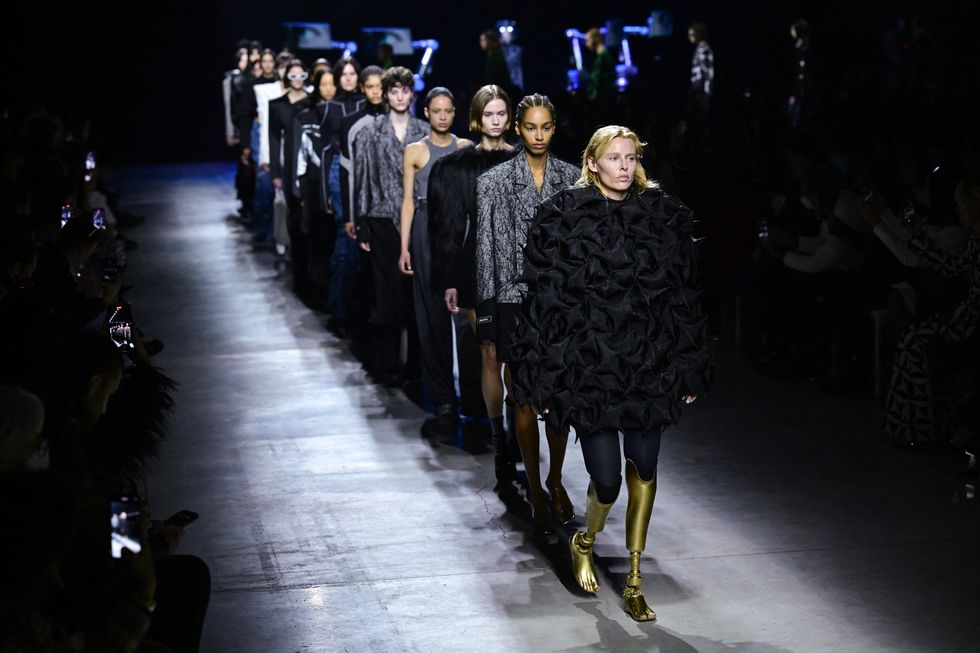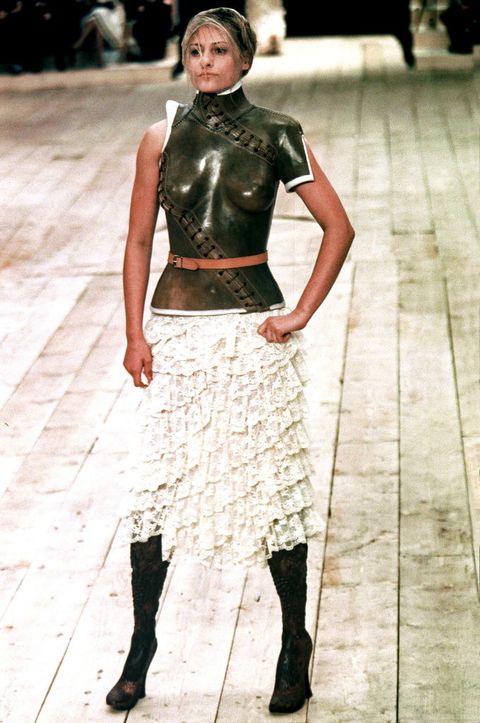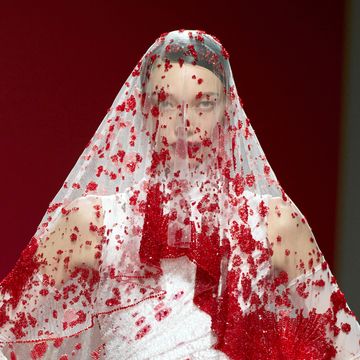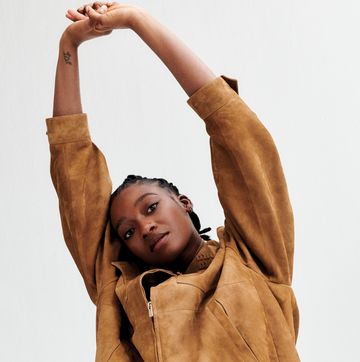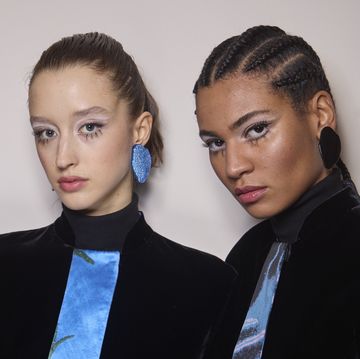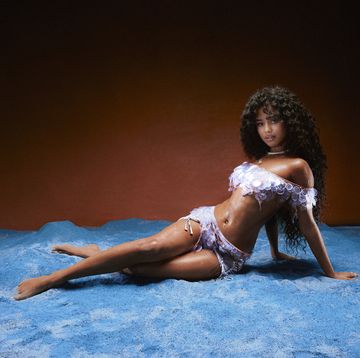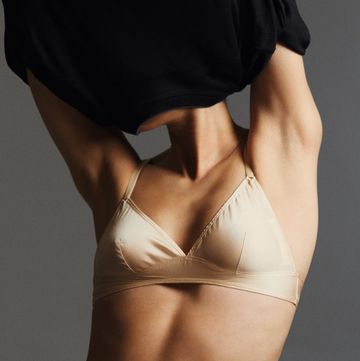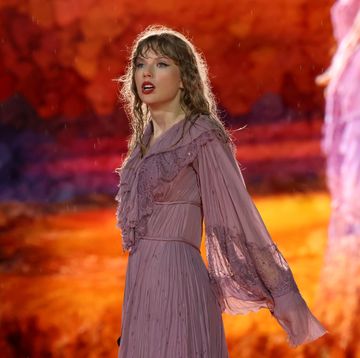‘You know, you’re really beautiful … you don’t feel disabled.’
For one of the world’s most high-profile disabled models, Aimee Mullins – who walked Alexander McQueen’s SS99 catwalk wearing a pair of ornately carved prosthetic legs – these words became chorus-like while backstage on the fashion circuit.
It may seem like the perfect compliment, a conspiratorial wink to validate her beauty and belonging. But, as Mullins explained to me, it masked a sinister subtext. What people were actually saying was: ‘You don’t feel like one of them, a disabled person; you feel like one of us.’
This ‘us versus them’ dynamic points to an unspoken rule that still pervades the fashion industry today: disabled and beautiful cannot co-exist.
It is devastating that disability remains a blind spot in fashion’s diversity agenda. Almost a fifth of the UK population is disabled, yet research has shown that only 4% of TV adverts have featured disabled people. When it comes to fashion month, the absence of disabled models is so stark that inclusivity reports do not even feature a disability category.
The experience of Jue Snell, a British model, is proof of this endemic exclusion in action. While attending a London Fashion Week casting, she was left humiliated at the auditioning table. ‘We don’t do disabled, move on,’ barked a casting agent, staring down at Snell’s amputated lower left arm.
During the SS23 show season, there was a glimmer of hope. Brands such as Collina Strada, Sinéad O’Dwyer and Gabriela Hearst went against the grain, sending models with prosthetic limbs and wheelchairs down their catwalks.
Although these radical castings offered us a rousing vision of what fashion could be, it laid bare just how far there is to go.
In my new book, See Me Rolling, I explore why disability is continually misread as a stamp of abnormality – something to be feared and shoved out of sight. This ableist culture is far from harmless. It is actively inflicting damage, with a study confirming that two in five disabled people felt the need to conceal their disabilities due to the negativity surrounding them.
So what will it take for this to change?
And, beyond that, could the fashion industry use its power to end the stigma that plagues disabled bodies?
It starts on the shop floor. Rewiring a system requires more than visual representation: we need everyday logistics. From poor retail access on the high street to a lack of accessible clothing options, many brands are neglecting the UK’s 14.6 million disabled consumers. True inclusion means eliminating these physical barriers so that everybody, regardless of ability, can feel empowered by the clothes they wear and the retail experiences they can enjoy.
The rise in adaptive fashion, for instance, illustrates how disability may be accommodated in the design process. Adaptivewear – championed by Nike, Skims and Tommy Hilfiger – is clothing intentionally created for those with disabilities and chronic illnesses. This encompasses modified waistbands, which are pinch-free, adjustable hemlines and easy-access bra fastenings to aid independent dressing.
But this is not the magic bullet.
Beyond these practical actions, disability inclusion requires us to expand our philosophy of beauty – to radically redefine what it means to be beautiful.
When the fashion industry finally decides to celebrate disabled bodies, presenting them not only as normal but desirable, I believe a revolution will begin. To see people with disabilities across campaigns and catwalks would offer us all the chance to dismantle our ableist mindsets. Instead of feeling alarmed by someone who appears unlike us, we must urge ourselves to look beyond our social conditioning around so-called ‘deformity’ and seek out the truth: that beauty is there for anyone to claim.
